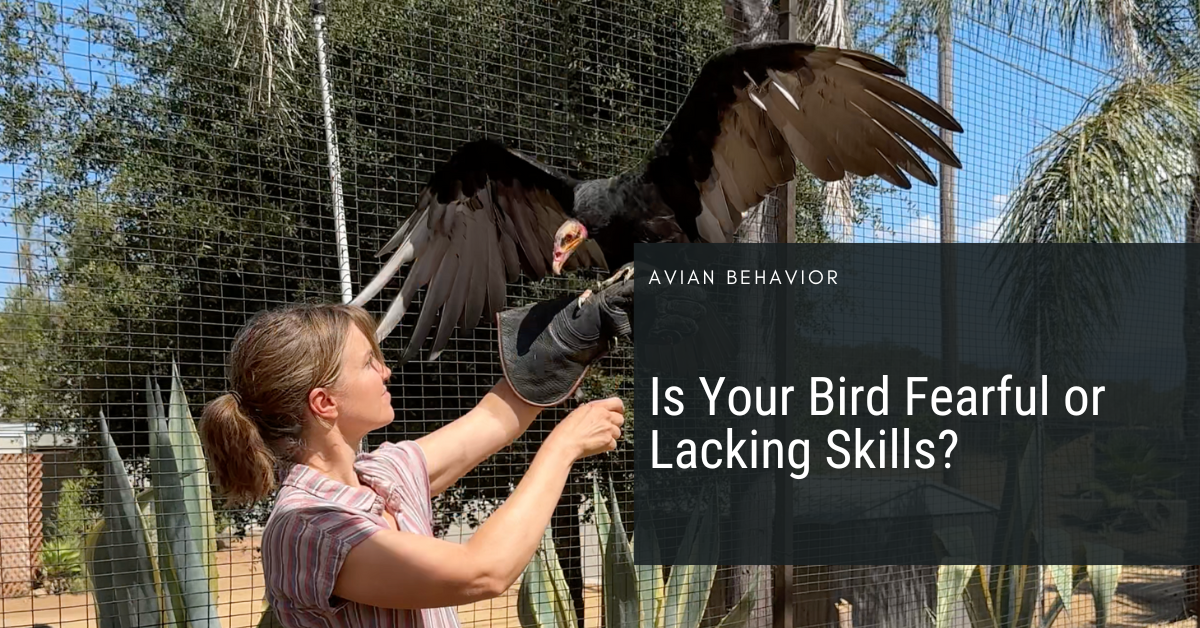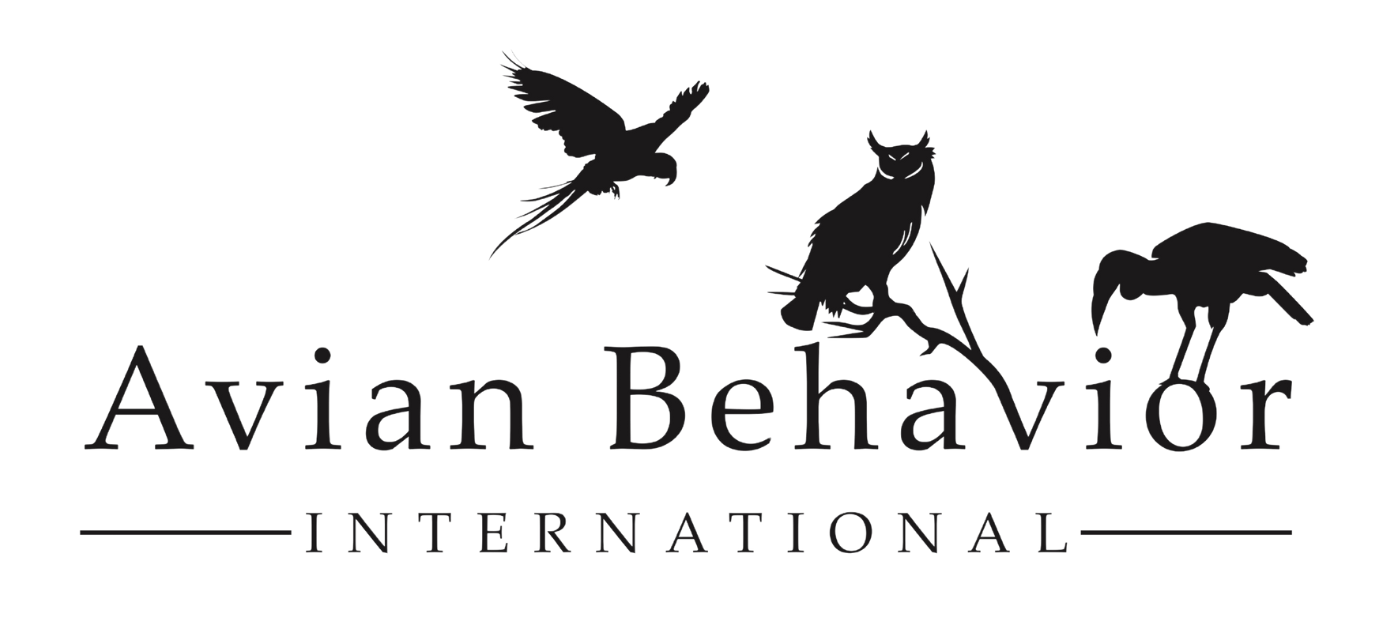
02 Oct Is Your Bird Fearful or Lacking Skills?
If you’ve been working with birds of prey for any length of time, you’ve encountered it: the bird that won’t step up, the eagle that lunges, the hawk that retreats to the back of the mew. And if you’re like most trainers, you’ve probably approached these behaviors as motivation issues—trying different reinforcers, adjusting your training sessions, working on building trust.
But what if we’ve been framing the problem wrong from the start?
The Negative Reinforcement Problem
My training paradigm changed completely when I started working with two birds at the same time that were very similar and very different: an older ornate hawk eagle and a young umbrella cockatoo that had grown up in a closet. Both birds didn’t want to step up or stay on the arm, and had different ways of expressing it. Here’s what my work with them revealed: fear is a problem in our training programs because we’ve been treating it as a positive reinforcement motivation issue when it’s actually maintained as a negative reinforcement contingency.
Let me explain what that means in practice.
When a bird displays fear or aggressive responses, the behavior is being reinforced by the removal or avoidance of something aversive—your presence, your hand, the crate, the training session itself. The bird isn’t necessarily failing to respond because they lack motivation for food or other positive reinforcers. In fact, in many cases, we don’t have many positive reinforcers to offer them to value. They’re responding perfectly to escape or avoid what they perceive as a threat.
We see this play out constantly:
- The bird that backs away from your hand or glove (and successfully increases distance from the perceived threat)
- The bird that clacks, pants, or flushes when approached (and often gets left alone as a result)
- The bird that dines and dashes when we try to get them to enter a crate (and delays or avoids the aversive situation)
Each time these behaviors successfully remove or reduce the aversive stimulus, they’re strengthened. And we, often unintentionally, reinforce them.
Why This Matters for Your Training
Understanding fear as a negative reinforcement issue fundamentally changes how we approach it.
Traditional “humane” approaches often focus on:
- Counter-conditioning with high-value food
- Gradual desensitization
- Increasing motivation with food deprivation
- Shaping with positive reinforcement based approximations
These aren’t all wrong, but they’re incomplete if we’re not addressing the functional consequence maintaining the behavior.
What Your Bird Really Needs
Give Your Bird Their Start and End Cue
Train a response that offers a predictable environmental condition that can start or end the interaction. In behavioral terms, we’re looking at manding—a verbal operant where the response is reinforced by a characteristic consequence and is under functional control of relevant conditions. This means that we enter their space or engage in the session when they give us a cue or body language that shows us that they are prepared for us.
In practical terms, to end the session: your bird needs a way to reliably communicate “I’m done” or “I’m ready” that you will honor consistently.
Assess Whether Your Bird Has the Skills
This is where most of us get tripped up. You can almost always get the behavior once. But can you get it to happen again? Can you get your bird back after the behavior?
Using a shaping plan to address the need for skills at each step is critically important for your bird’s long-term success. Sometimes what looks like fear is actually a skills deficit—the bird doesn’t know what to do in that situation, so they default to escape or avoidance.
Identify the Functional Consequence
Multiple contingencies are at work in any given interaction. We can use multiple contingencies and different reinforcers. But the functional consequence—the one actually maintaining the behavior—is what we need to address.
Is the bird’s refusal to step up maintained by escape from your hand? Or by access to a preferred perch? Or by ending the training session? Until you identify what’s actually reinforcing the behavior, you’re training in the dark.
Species and Individual Considerations
Vultures, eagles, and other raptors each bring their own behavioral repertoires and preferences. Knowing your species and the individual’s skills and preferences for reinforcers makes a significant difference in how you approach fear and aggressive responses.
What works for a Harris’s hawk may not translate to a turkey vulture. What a bold adult female red tailed hawk finds reinforcing, a juvenile male may find neutral or even aversive.
The Question We Should Be Asking
Do we need to address fear and avoidance head-on?
Some of our practices focus on addressing the fear response before we start training other behaviors. Other approaches allow the fear behaviors to subside naturally as we build skills in other areas.
There’s no single right answer, but understanding that fear is maintained by negative reinforcement helps us make more informed decisions about which approach will work best for each individual bird.
Moving Forward
The next time you’re faced with a bird displaying fear or aggression, pause and ask yourself:
- What is being removed or avoided when this behavior occurs?
- Does my bird have the skills needed for what I’m asking?
- What’s the actual functional consequence maintaining this behavior?
- Have I given my bird a reliable way to communicate their readiness or need for a break?
Fear isn’t a failure of trust or motivation. It’s a behavior pattern maintained by contingencies we can identify and address—once we stop treating it as the wrong kind of problem.
For more advanced training strategies and in-depth discussion of behavioral principles, join us inside the Avian Behavior Lab. You’ll get hundreds of hours of in-depth courses, live trainings, and a supportive community to help you grow! Join FREE for 2 weeks – use code AVIAN at checkout.

